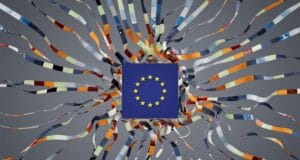The National Access Point for Mobility Data (NTM) aims to make mobility data in the Netherlands available, usable and reliable through one entry point. Why is this important? And what steps is the NTM taking to achieve this goal? We discussed this with Maryse Bücking, Information Architect at NTM and Jan Maarten van den Berg, Business Manager at NTM.
Making mobility data findable through the Mobility Data register
The NTM is one of the three portfolios of the administrative organisation of the National Road Traffic Data Portal (NDW). In addition to the NDW and the NTM, it also consists of the National Road Database (NWB). “With the NTM, we are creating a central place for organisations to find mobility data,” says Maryse. “This data is stored in various locations with different data owners. This could be a government agency but also parties such as Portbase, which, for example, has data from Dutch ports. The NTM itself does not store any data on NTM. We believe in making data available federatively.” Since November 1, 2022, the NTM organization has been established to further develop the national access point for Intelligent Transport Services (ITS) data. Maryse: “Due to European legislation regarding ITS, member states are required to set up a national access point that makes mobility data available. The NTM was establisged by the Ministry of Infrastructure and Waterworks to act as the national access point for the Netherlands.”
To make all this mobility data findable, the NTM set up the Mobility Data register. “People often don’t know where to find mobility data or which standard to use. Through our register, we offer a central place for data owners to register their datasets and make them visible to others,” Jan Maarten explains. The ambitions of the NTM extends beyond just making datasets findable. Jan Maarten: “Offering datasets is important, but it is equally important to provide insight into the quality of the data, which standards have been used or the conditions under which data can and cannot be shared. A next step could be that we give parties the opportunity to offer data services via the register. Think of algorithms to extract insights from data. But we’re not there yet. It is a huge challenge to present all that information in a register in a structured manner. Just making datasets findable is an important first step.”
The NTM acts as a intermediary that connects supply and demand in the field of mobility data
The NTM not only functions as an access point, but also helps registered data owners with their mobility challenges. “We see the NTM playing a role as an intermediary that connects supply and demand in the field of mobility data,” Jan Maarten explains. “We do this at all levels. For example, we work together with the NDW and DOVA to compare data sets on road use from the NDW with data sets on the use of public transport from DOVA. By doing that, we can make a travel time comparison and thus assess what the fastest routes from A to B are at a certain time. Unfortunately, combining datasets such as these still happens far too little due to siloes in the mobility sector.”
“In addition, we think along with parties involved in road safety and who, for example, want to know road characteristics in order to assess traffic risks. We also deal with ITS issues from parties that want to develop safety related traffic information (SRTI) and real-time traffic information (RTTI) services and, for example, want to use safety messages from cars to detect incidents. Or we deal with questions about how to use car data for asset management purposes, for example assessing the quality of asphalt or the smoothness of the road surface.”
Making German road works data available in a cross-national use case
In 2024, the NTM will work on a use case across national borders. Together with, among others, the German Mobility Dataspace and DEFLog – an infrastructure facility for the logistics sector – NTM is investigating how information about German road works can be made more available to the logistics sector in the Netherlands and Germany. “Think of sending notifications from service providers about road works to the navigation systems of road users, where the system provides feedback on how many people have seen that information,” says Maryse. “Because German legislation on sharing this type of information is a lot stricter because of privacy sensitivity, I expect that we will mainly encounter legal challenges in this use case.”
As an access point for mobility data, the NTM also wants to guarantee the quality of datasets offered through the register. Maryse: “We want to be able to provide quality assurance: when datasets are found at the NTM, one can be assured that those datasets are reliable and usable. In this case, using widely embraced standards is important. Unfortunately, we see a lot of fragmentation in the mobility sector. With regard to mobility alone, you have different standards for road traffic, public transport and shared mobility. That is why we are also involved in solving challenges related to interoperability between standards. And we seek cooperation with standardisation organisations in the Netherlands and Europe to gain more insight into this. We are also keen to learn from initiatives such as the CoE-DSC that has explored data sharing standards across different sectors and interoperability between them.”
Do you want to know more about the NTM and/or register your datasets via the mobility register? Visit the NTM website for more information.




